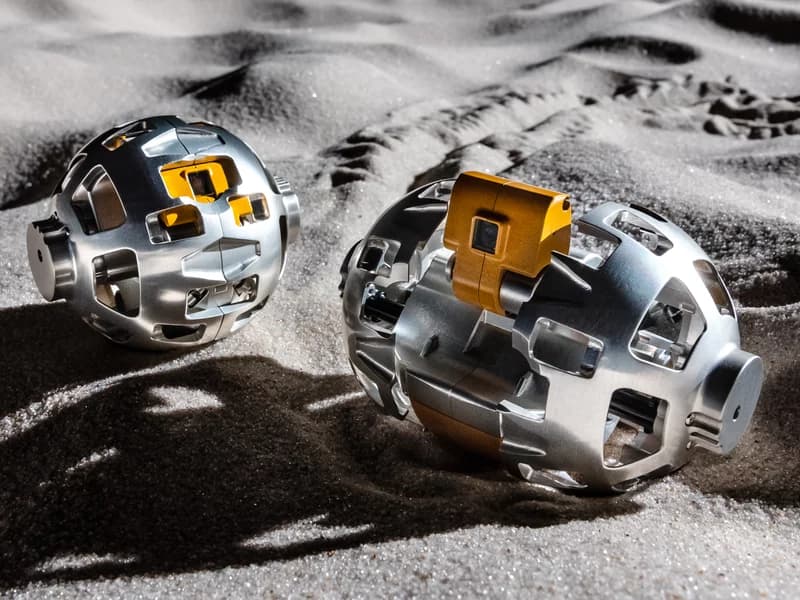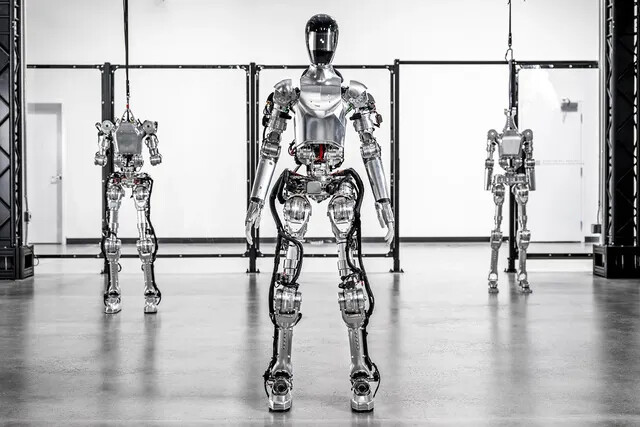
The Robotics Roundup is a weekly newspost going over some of the most exciting developments in robotics over the past week.
In today’s edition we have:
- The Man Who Coined the Word “Robot” Defends Himself
- Robot Team Builds High-Performance Digital Structure for NASA
- Japan succeeds in soft landing on the moon, but its lander has a power problem
- What social robots can teach America’s students
- BMW’s South Carolina plant is testing humanoid robot workers
The Man Who Coined the Word “Robot” Defends Himself
Karel Čapek, the man who coined the term “robot” in 1921, had a different vision for his creations than the mechanical beings they’ve become. Originally introduced in his play “R.U.R.” (Rossum’s Universal Robots), Čapek’s robots were described as artificial humans. However, within a decade, the term began to represent mechanical and electronic entities. In 1935, Čapek defended his original concept of robots, expressing his disdain for the mechanical interpretation. A new English translation of R.U.R. includes Čapek’s column, and the book is edited by Jitka Čejková, a professor at the Chemical Robotics Laboratory at the University of Chemistry and Technology Prague. She designs “liquid robots,” microparticles exhibiting complex autonomous behavior, reflecting Čapek’s original ideas more closely than contemporaneous mechanical robots.
Robot Team Builds High-Performance Digital Structure for NASA
NASA’s Automated Reconfigurable Mission Adaptive Digital Assembly Systems (ARMADAS) team is developing a system that uses simple robots to autonomously construct large-scale, high-performance structures for deep-space exploration missions. The robots can assemble, repair, and reconfigure structural materials for systems such as solar power stations, communications towers, and crew habitats. The system was tested in a lab at NASA’s Ames Research Center, where three robots autonomously built a shelter structure. The technology will be critical for long-term exploration missions as it allows for in-place construction and maintenance of infrastructure, replacing the need to send large pre-assembled hardware from Earth. Future work will expand the types of blocks the robots can work with and add new robot capabilities, such as inspection tools.
Japan succeeds in soft landing on the moon, but its lander has a power problem
The Japanese space agency, JAXA, has successfully landed its “Moon Sniper” mission on the lunar surface, marking the country’s first soft landing on the moon. However, challenges remain as the lander is not drawing power from its solar panels, causing it to rely on battery power. Despite this, the lander has successfully deployed two small lunar probes, including a tiny transforming robot created in partnership with toy company Takara Tomy, the inventors of Transformers. This places Japan as the fifth country to achieve a soft landing on the moon, following the U.S., China, the former Soviet Union, and India. The mission’s aim is to practice “pinpoint landing,” or reaching highly specific targets on the lunar surface, a complex task due to differences in gravity compared to other celestial bodies like asteroids.
What social robots can teach America’s students
The integration of social robots, robots capable of mimicry and emotional response, into classrooms worldwide has been met with both enthusiasm and skepticism. These robots have been used to read stories, teach languages, and assist children with autism. However, as research is conducted in real-life classroom settings, several issues have arisen. Social robots require quiet environments for communication, lack the ability to recognize individual humans, and are unable to pick up on subtle facial expressions. Additionally, their dialogues are preprogrammed, limiting their conversational abilities. While they struggle to mimic human behavior accurately, they can still be used as a tool for students to learn about robotics, artificial intelligence, and the complexity of human interactions.
BMW’s South Carolina plant is testing humanoid robot workers
Robotics startup Figure has entered into a commercial agreement with BMW to bring its general-purpose humanoid robots to BMW’s manufacturing facility in Spartanburg, South Carolina. The robots will be deployed to evaluate their effectiveness in automating difficult, unsafe, or tedious manufacturing tasks. This initiative marks an expanding interest in walking robots in the automotive industry, with companies like Honda, Hyundai, and Tesla having previously engaged in developing similar tech. The partnership between Figure and BMW will begin with small quantities of robots, which may increase over time if performance targets are met.




